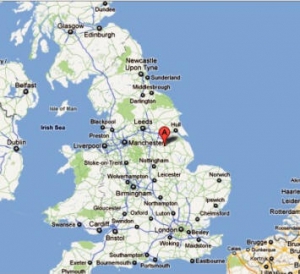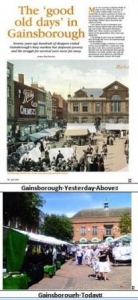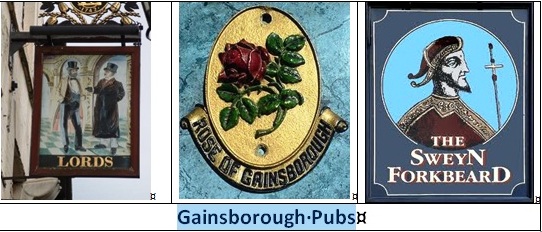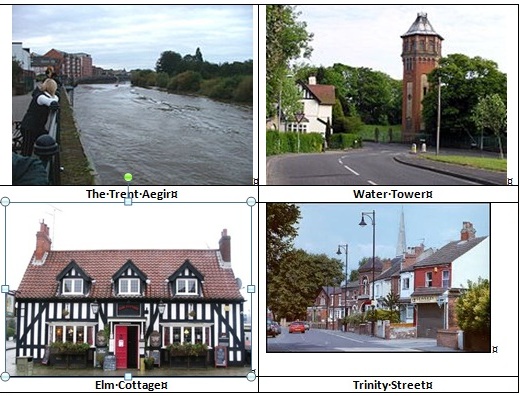Dear Donald,
|
Enjoy.
| JERREMS STREET |
Ray Jerrems, Our Genealogist, Historian
In the Beginning
 Introduction
Introduction
I have always been interested in street names because they come in almost infinite variations, from such sources in Australia as the names of trees, flowers, politicians, famous aviators, Aboriginal place-names, battle fields and local settlers. Some are in thematic clusters, some are random. We live in Carbeen Avenue, which is the Aboriginal name for a eucalypt tree which grows in the north west of New South Wales.
My boyhood ambition was to have a Jerrems Street
When I was about 12 years old I started delivering newspapers and was a delivery boy for a chemist (“drug store” to our US readers). I learned the name of every street in my suburb, which way the house numbers ran, and which route was the best to avoid the steep hills on my bicycle (which did not have gears). Oh, also, I soon found out which houses had dogs who thought it was fun to chase delivery boys.
Sometimes, as I rode along the streets I made up fanciful stories about the origins of the names, and thought how wonderful it would be to have a “Jerrems Street” in the neighbourhood. Imagine the impression this would make on my school friends!
You can understand my disappointment when I heard later that in the 1930s my grandfather had declined an offer by the local Council to name a street after him, in recognition of his services to the Council! My grandfather was a very modest man and he did not like the idea, even though he had been a councillor for about 8 years.
Finally, my dream came true. I found out about 5 years ago that that there had been a Jerrems Street. To cap this off, there had been a Jerrems Yard, a Jerrems Square, a Jerrems Row and a Jerrems Terrace! The only problem is that they were in far off England. Bother!
| What was Jerrems Street? |

The street was located between Southolme Street and Torr Street, in the southern part of Gainsborough, about one kilometre (half a mile to our US readers) from the city centre.
The street appears to have been closed in the 1930s or later. I have been informed that it was shown on a 1927/8 Directory but is not shown on maps after that time. However I have found a fairly recent photo of a hotel which was on the corner of Jerrems Street, according to the following caption on the photo:
“Gainsborough’s Half Moon pub, now sadly closed. This pub now stands on Southolme Street, but until the 1920s at least, this was officially Hickman Street. At the far end of the pub was a little street called Jerrems Street, long, long since vanished.”
| The entry to Jerrems Street |

Two recent photos of the pub, from different angles, show a house or building extension set back on the left hand side of the hotel behind the green fence. This is a far more recent structure than the pub and it is very likely that this is where Jerrems Street originally started from Southolme Street.
Which Jerrems families lived in the street?
The 1851 Census shows that residents living in the street at that time included two Jerrems families. “Big Bill” lived in No.23, with his wife Elizabeth and her sister Mary Clarke. His son William lived in No. 30 with his wife Jane, daughter Elizabeth (aged 4) and son William Rawson (aged 2). Bill’s son William described himself as an auctioneer.
It is also possible that my great great grandmother Elizabeth lived in the street in the 1850s during the period of about 7 years when Thomas Snr and Thomas Jnr had gone to Melbourne. The reason for this theory is that some of the children (incuding my great grandfather Thomas) were baptised at Trinity Church (pictured on the left), which was not far away. Perhaps they stayed with Big Bill, who was the childrens’ grandfather.
Although the street was described as “a little street” by the person who took the photograph referred to above, the 1851 Census shows that it had 30 houses in it.
Why call it Jerrems Street?
It seems very likely that the street was named after Big Bill because he had bought land in that area. It is significant that although Bill had been a prominent grocer in the main part of Gainsborough as early as 1805 he described himself in the 1851 Census rather grandiosely as “Proprietor of houses and lands”. At that stage he was 69. It is likely that his grocery business in the main part of Gainsborough had been taken over after 1844 (the last time Bill described himself as a grocer) by his son Thomas, who later migrated to Australia in the early 1850s.
This was shortly after the time (1842) that the imposing Holy Trinity Church (see left positioned photo) was built in nearby Trinity Street, indicating that there had been a surge in the local population at that time. The Church is now the Trinity Arts Centre, opened in 1978.
The other residents living in the street
Censuses provide a fund of information which helps us to reconstruct the socio-economic situation of the times. Jerrems Street was very much a “working class” street. The only “white collar” people were Big Bill’s son William (an auctioneer), William Westren (an innkeeper), and Big Bill himself. There were only 5 tradesmen in the street, the rest were unqualified (for instance 12 heads of families were labourers).
Some of the houses must have been fairly substantial in size (or perhaps the occupiers squeezed in), because 3 had (respectively) 10, 9 and 8 inhabitants. At the other end of the scale 6 had only one or two inhabitants. Excluding 4 vacant houses, the average number of inhabitants per house was four people.
Only two families (including Big Bill’s) had a servant.
The influence of the Gainsborough wharves and shipyards is apparent from the occupations of some of the men, a sailmaker, two wharf porters, and two roper’s labourers (a roper was a ropemaker who made ropes for sailing ships and boats).
Some of the inhabitants must have found it hard to make ends meet. Six were widowed women, showing the prevalence of husbands dying at an early adult age. In House 9 Sarah Kirk was a widowed pauper charwoman with a son (a printer and bookbinder) and 3 student children aged 12, 10 and 5. No doubt Sarah relied heavily on her eldest son to help out. In House 6 Harriet Bingley, a widowed pauper laundress, had 4 children, only one of whom was old enough to work (as a girl nurse). The only widower in the street, with 3 children, was a bricklayer.
The ages of the inhabitants varied widely. In House 2 James Judd, at 72, was a wharf porter. Big Bill himself was 69.
The role of the Half Moon Hotel
Having a pub on the corner would have been handy for the residents of Jerrems Street if they wished to pop in occasionally for a refreshing ale. At a weight of 18 stone it is very possible that Bill called in quite often at a local hostelry to ward off the risk of dehydration. Perhaps he called in at the Half Moon Hotel.
Coincidentally, there is also a Half Moon Hotel in nearby Willingham-By-Stow, where Big Bill spent his childhood.
Acknowledgements
Some of the information in this article was provided by Dorothy Pearson, President of the Gainsborough and District Heritage Association, which started in 1994.
Also, thanks to the website “Tatraskoda” for two of the photographs.
Conclusion
At last, my ambition of having a Jerrems Street has been achieved, the only problem being that it was in England and it has passed without trace into antiquity.
Perhaps I should start up a petition to change the name of our street to Jerrems Street. After all, we have lived here for 38 years.
| Local shops and pubs of Gainsborough |

Local shops and pubs of Gainsborough – Fine Looking Signage
| Scenes from Gainsborough |

Scenes from Gainsborough
Image at Left: The Trent Aegir is a tidal bore on the River Trent in England. At certain times of the year, the lower tidal reaches of the Trent experience a moderately large bore (up to five feet (1.5m) high). It takes its name from Ęgir, the Norse god of the ocean.
The aegir occurs when a high spring tide meets the downstream flow of the river. The funnel shape of the river mouth exaggerates this effect, causing a large wave to travel upstream as far as Gainsborough, Lincolnshire, and sometimes beyond. The aegir cannot travel much beyond Gainsborough as the shape of the river reduces the aegir to little more than a ripple, and weirs north of Newark-on-Trent, Nottinghamshire stop its path completely.
| Granary Wharf, Gainsborough, 1890 |

And it gets cold once in a while.

